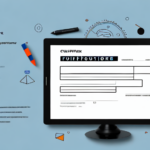Reviews: An In-Depth Look at What Consumers Think
In today's digital age, reviews have become an integral part of the consumer experience. Whether we're looking for a new product, a restaurant to try, or a service provider, we rely heavily on the opinions of others to make informed decisions. But what is it about reviews that makes them so important? And how can businesses effectively utilize customer feedback to improve their products and services? In this article, we'll explore the psychology behind review culture, the impact of positive vs negative reviews on a business, and much more.
Understanding the Importance of Consumer Reviews
Customer reviews provide valuable insights into the quality and overall experience of a product or service. They offer a form of social proof—the idea that others have already tried and approved of a product—that can help build trust and confidence in a brand. In fact, studies have shown that nearly 95% of consumers read online reviews before making a purchase (BrightLocal, 2023), and that products with reviews have a higher likelihood of being purchased than those without.
Furthermore, consumer reviews can also provide businesses with valuable feedback on their products or services. By analyzing the feedback provided in reviews, businesses can identify areas for improvement and make necessary changes to better meet the needs and expectations of their customers. This can lead to increased customer satisfaction and loyalty, as well as improved business performance.
The Psychology Behind Reading and Writing Product Reviews
Reading and writing reviews can have a powerful impact on our decision-making processes. When we read reviews, we're looking for social validation, information, and reassurance that we're making the right choice. When we write reviews, we can experience a sense of empowerment and satisfaction from sharing our opinions and influencing others.
Research has shown that people are more likely to trust and rely on reviews from other consumers than on advertisements or product descriptions from the company itself. This is because reviews provide a more authentic and unbiased perspective on the product or service. Additionally, reading and writing reviews can also serve as a form of social connection and community building, as people share their experiences and opinions with others who have similar interests or needs. For example, a study published in Nature highlights the role of online reviews in fostering community engagement and informed decision-making.
The Impact of Positive and Negative Reviews on a Business
The impact of reviews on a business can be significant. Positive reviews can increase sales, improve search engine rankings, and help build a positive brand reputation. On the other hand, negative reviews can deter potential customers, harm a business's reputation, and ultimately hurt the bottom line. It's important for businesses to actively monitor and manage their online reviews to ensure that they are maintaining a positive image.
In addition to monitoring and managing online reviews, businesses should also respond to both positive and negative reviews. Responding to positive reviews can show appreciation for the customer's feedback and help build a stronger relationship with them. Responding to negative reviews can demonstrate a willingness to address and resolve any issues, which can potentially turn a negative experience into a positive one. It's important for businesses to approach all reviews with a professional and empathetic tone, as this can further enhance their reputation and customer loyalty.
Managing and Encouraging Customer Reviews
How to Encourage Customers to Leave Reviews
Encouraging customers to leave reviews can be a challenge, but there are several strategies that businesses can use to increase their review volume:
- Provide Excellent Customer Service: Satisfied customers are more likely to leave positive reviews.
- Automated Review Requests: Set up automated emails requesting reviews after a purchase or service experience.
- Offer Incentives: While incentivizing reviews should be done ethically and transparently, small rewards can motivate customers to share their feedback.
Another effective way to encourage customers to leave reviews is by making the process as easy as possible. This can be achieved by providing clear instructions on how to leave a review, including links to review sites, and simplifying the review form. Customers are more likely to leave a review if they don't have to go through a complicated process.
The Role of Social Media in Review Culture
Social media has become an important platform for reviews and customer feedback. Businesses can use social listening tools to monitor and respond to reviews on social media, and customers can share their experiences with a wider audience through social sharing. It's important for businesses to have a strategy in place for managing their social media reviews and responding to negative feedback in a professional and timely manner.
One of the benefits of social media reviews is that they can provide businesses with valuable insights into their customers' preferences and opinions. By analyzing social media reviews, businesses can identify trends and patterns in customer feedback, which can help them improve their products and services. Additionally, social media reviews can help businesses build trust and credibility with their customers, as they provide a transparent and authentic view of the customer experience.
However, social media reviews can also be a double-edged sword. While positive reviews can help businesses attract new customers and build their reputation, negative reviews can have the opposite effect. Businesses need to be prepared to handle negative reviews in a constructive and professional manner, by acknowledging the customer's concerns and offering solutions to address their issues. By doing so, businesses can turn a negative experience into a positive one, and demonstrate their commitment to customer satisfaction.
The Ethics of Paid Reviews and Influencer Marketing
The rise of influencer marketing has led to an increase in paid product reviews, which can blur the line between authentic feedback and sponsored content. It's important for businesses to be transparent about their relationships with influencers and to ensure that they are not engaging in deceptive marketing practices.
One of the main concerns with paid reviews and influencer marketing is the potential for bias. When influencers are paid to promote a product, they may be more likely to give a positive review, even if the product is not actually that great. This can mislead consumers and damage the credibility of both the influencer and the brand.
Another issue is the lack of regulation in this area. While some countries have guidelines for influencer marketing, many do not, leaving it up to individual businesses and influencers to decide what is ethical. This can lead to inconsistencies and confusion for consumers, who may not know whether they can trust the reviews they are reading (FTC Endorsement Guides).
Analyzing Consumer Reviews
Common Keywords in Reviews
By analyzing the most common keywords used in reviews, businesses can gain valuable insights into what their customers value and what they need to improve. Keywords such as "quality", "price", and "customer service" can provide clues as to where a business should focus their efforts.
Another important aspect to consider when analyzing keywords in reviews is the sentiment associated with them. For example, if the keyword "customer service" is frequently mentioned in negative reviews, it may indicate that the business needs to improve their customer service experience. On the other hand, if the keyword is mentioned in positive reviews, it may indicate that the business is doing well in that area.
It's also important to look at the context in which the keywords are used. For instance, the keyword "price" may be mentioned frequently in reviews, but it's important to understand whether customers are complaining about high prices or praising the affordability of the business's products or services. This context can help businesses make more informed decisions about pricing strategies.
Sentiment Analysis
Sentiment analysis tools can help businesses automatically identify and categorize the sentiments expressed in reviews, allowing them to quickly assess customer satisfaction and sentiment trends over time. Tools like MonkeyLearn or Lexalytics provide advanced capabilities to understand the emotional tone behind customer feedback.
Utilizing Customer Feedback to Improve Products and Services
Customer feedback can be a valuable tool for improving the overall quality of a product or service. By listening to what their customers are saying, businesses can identify areas for improvement and make changes that can lead to increased customer satisfaction and loyalty.
One effective way for businesses to gather customer feedback is through surveys. Surveys can be conducted online, through email, or in person. They can ask specific questions about the product or service, as well as general questions about the customer's experience. By analyzing the results of these surveys, businesses can gain valuable insights into what their customers like and dislike, and what changes they would like to see.
Case Studies: Successful Utilization of Consumer Reviews
By examining case studies of businesses that have successfully utilized consumer reviews, we can gain valuable insights into what works and what doesn't. Companies such as Yelp, Amazon, and Airbnb have all built their business models around customer reviews, and their success can serve as a roadmap for other businesses looking to leverage the power of customer feedback.
Reviews have become an integral part of the consumer experience, and businesses need to recognize their importance if they want to remain competitive in today's market. By understanding the psychology behind review culture, effectively managing their online reputation, and using customer feedback to drive improvements, businesses can create a positive and successful brand image. So whether you're a consumer looking for the best product or a business looking to improve your offerings, it's clear that reviews will continue to play a critical role in shaping our purchasing decisions for years to come.
Navigating Reviews as a Consumer and Future Trends
Navigating Fake or Biased Reviews as a Consumer
Fake or biased reviews can be a challenge for consumers to navigate, but there are several strategies that can be used to spot them:
- Look for Patterns: Multiple reviews mentioning the same issues or praising the same features may indicate authenticity.
- Check for Verified Purchases: Reviews from verified buyers are more likely to be genuine.
- Use Third-Party Review Sites: Platforms like Trustpilot or Sitejabber have measures in place to detect and reduce fake reviews.
It's important to keep in mind that not all negative reviews are necessarily fake or biased. Sometimes, a product or service may simply not meet the expectations of a particular consumer. However, if a large number of reviews seem to be overly positive or negative, or if they all use similar language or phrasing, it may be a sign that they are not genuine.
The Future of Review Culture: Predictions and Trends
Review culture is constantly evolving, and businesses need to stay ahead of the curve to remain competitive. The rise of AI-powered reviews, an increased focus on social responsibility, and a growing demand for personalized experiences are just a few of the trends that are shaping the future of reviews.
Another trend that is expected to shape the future of review culture is the increasing importance of visual content. With the rise of social media platforms like Instagram and TikTok, consumers are becoming more visually-oriented and are looking for reviews that include images and videos. This means that businesses will need to focus on creating visually appealing content to accompany their reviews, and may need to invest in tools and resources to help them do so.





















